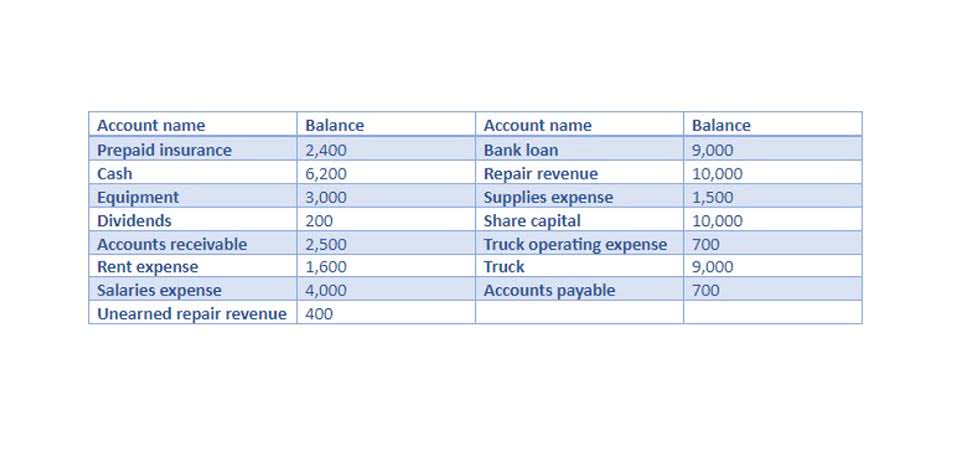Adjusting Entries for Asset Accounts
- Posted by admin rcs
- On August 28, 2023
- 0

Similarly, pre-paid insurance would be dealt with, however, you would charge the insurance in the statements on a straight line amortization. Also, When you pay the pre-paid insurance, you would credit your expense account and the pre paid insurance account is debited. Deferred revenue should be recorded as an asset and classified as a current asset if it is expected to be realized in the next 12 months. If it is not expected to be realized in the next 12 months, it should be classified as a long-term asset.

Prepaid Rent and Other Rent Accounting for ASC 842 Explained (Base, Accrued, Contingent, and Deferred)
This helps ensure that companies are accurately accounting for their assets while also staying up-to-date with any upcoming liabilities. The amount of time a prepaid expense is reported as an asset should correspond with how long the payment will provide a benefit to the organization, usually up to 12 months. Prepaid or unexpired expenses can be recorded under two methods – asset method and expense method.

Prepaid insurance is a current asset
- Now that the company has prepaid for services to be used, it is classified as an asset.
- The quick ratio is calculated by dividing cash, or an organization’s most liquid assets such as cash equivalents, marketable securities, and accounts receivable by its current liabilities.
- Also, No insurance company would sell you insurance that covers all the expenses after the unfortunate incident, so expenses must be prepaid.
- Prepaid expenses (a.k.a. prepayments) represent payments made for expenses which have not yet been incurred or used.
On the payment date, the transaction is recorded with a debit of $2,400 to Prepaid Insurance and a credit of $2,400 to Cash. Initially, the entire $2,400 will be reported on the balance sheet as Prepaid Insurance or Prepaid Expenses. However, at the end of each month, an adjusting entry will be made to reflect the expired portion.
What is the difference between prepaid assets and deferred revenue?
Another example is a company that buys one year of general liability insurance in advance for $12,000. The initial entry is a debit of $12,000 to the prepaid insurance (asset) account and a credit of $12,000 to the cash (asset) account. Each month, a journal entry is made to debit the insurance expense account and credit the prepaid expenses (asset) account. Insurance providers prefer to bill insurance in advance and so knowing the right journal entry for https://x.com/BooksTimeInc prepaid insurance is very important. For instance, the providers of medical insurance usually insist on advance payment, and if a business were to pay late, it would be at risk of having its insurance coverage terminated.
Adjusting entries for prepaid expense
Rather, under GAAP accounting, it should be gradually and systematically amortized over the term of the agreement. In most cases, this is the correct entry to book, however, in certain transactions we are paying upfront for the right to use an asset or receive a service over a defined period of time. Prepaid expenses, or Prepaid Assets as they are commonly referred to in general accounting, are recognized on the balance sheet as an asset. A “prepaid asset” is the result of a prepaid expense being recorded on the balance sheet.
- It is important to show prepaid expenses journal entry in the financial statements to avoid understatement of earnings.
- Another example is unearned revenue, where a customer has paid for services that have not yet been rendered.
- Let us look at the balance sheet at the end of one month on December 31, 2017.
- For example, consider a company that pays an insurance premium of $2,400 for coverage from December 1 to May 31.
- Prepaid insurance is treated as an asset because it has been paid for by the company and has future value.

However, the premiums may be marginally higher to account for inflation and other operating factors. prepaid insurance journal entry adjustments As the prepaid insurance expires throughout the passage of time, the company needs to transfer the prepaid insurance that has expired in the period to the insurance expense. In the business, the company usually needs to make an advance payment for the insurance that it has purchases. In this case, it is important for the company to record the payment as prepaid insurance. Estimates are adjusting entries that record non-cash items, such as depreciation expenses, allowance for doubtful accounts, or inventory obsolescence reserves.
- In this case, it will be classified as a current asset on the Balance Sheet because it covers and falls within one year.
- When they aren’t used up or expired, these payments show up on an insurance company’s balance sheet.
- Rather, they are classified as current assets, readily available for use when the company needs them.
- Now, that we understand this, what journal entries will one make to record the $100 worth of insurance used and the $1,100 worth of prepaid insurance remaining?
- Likewise, the journal entry for the insurance expense that is converted from the expiration cost of prepaid insurance is the debit of the insurance expense account and the credit of the prepaid insurance account.
Therefore the balance in Accounts Receivable might be approximately the amount of one month’s sales, if the company allows customers to pay their invoices in 30 days. The quick ratio, while also being a liquidity ratio, only factors in an organization’s most liquid assets such as cash and cash equivalents that can be converted the quickest, hence the same. The quick ratio is calculated by dividing cash, or an organization’s most https://www.bookstime.com/ liquid assets such as cash equivalents, marketable securities, and accounts receivable by its current liabilities. As a result of not being a cash equivalent or highly liquid, prepaid expenses do not impact the quick ratio.
Prepaid Assets FAQs

11 Financial’s website is limited to the dissemination of general information pertaining to its advisory services, together with access to additional investment-related information, publications, and links. Obotu has 2+years of professional experience in the business and finance sector. Her expertise lies in marketing, economics, finance, biology, and literature. She enjoys writing in these fields to educate and share her wealth of knowledge and experience. For the past 52 years, Harold Averkamp (CPA, MBA) hasworked as an accounting supervisor, manager, consultant, university instructor, and innovator in teaching accounting online. In the context of inventory, net realizable value or NRV is the expected selling price in the ordinary course of business minus the costs of completion, disposal, and transportation.



0 comments on Adjusting Entries for Asset Accounts